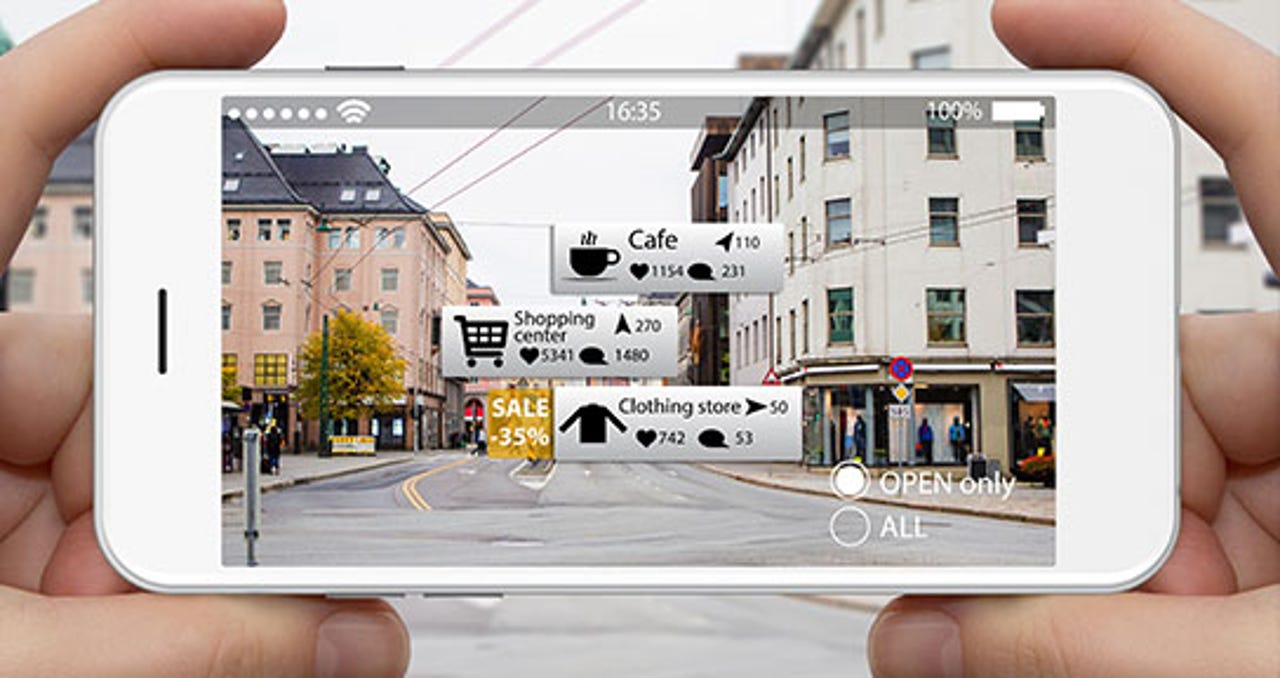11 upcoming AR trends that will redefine technology

Education
The battle between teachers and students over smartphones in the classroom may be heading for a negotiated peace--at least in some classrooms. New apps are helping to supplement course material in engaging, decidedly more interactive ways.
JigSpace, for example, lets kids explore virtual 3D models of objects on a table. FigmentAR, which allows you to create virtual portals to new worlds, has become popular with teachers. By setting up portals around the room, teachers have ready-made learning stations. Kids can leap from the classroom to an underwater world to study whales while filling in workbooks. Then, at the next portal, they can get up close with some ancient ruins.
Head-Up Displays
Head-Up Displays (HUDs) are perhaps the first useful deployment of AR in the marketplace. HUDs now adorn models from BMW, Volvo, Chevy, Lexus, and many others. There's also a thriving aftermarket offering stick-on HUDs that interface with a car's OBD-II port to display vital information like speed and gas mileage without requiring drivers to take their eyes off the road.
Expect to start seeing these in economy cars, not just luxury models. If you prefer two wheels, you'll be happy to know the concept has even made its way into motorcycle helmets.
Healthcare
Surgeons at the Warsaw Institute of Cardiology have operated on human hearts using Google Glass to "see inside" clogged vessels they're operating on. Medical students at Case Western, meanwhile, will be using a HoloLens to peel back virtual tissue on digital cadavers.
Healthcare is a prime candidate for AR adoption precisely because its a field that requires individuals to make important decisions on the fly with available information. Just as surgeons have adopted robots to enhance the uncanny dexterity of humans, the industry is looking at novel uses of heads up displays and wearables to enhance the decision-making capabilities of people that are often under stress and under the gun.
Mobile sales
This isn't so much a trend with AR as a likely byproduct of the coming AR revolution. Headsets still haven't taken off in a compelling way, which means smartphones will be the AR vehicle of choice for the next few years.
That's good news for smartphone manufacturers, who have seen life cycles for their products rise from 18 months to three years. As AR penetration grows, it'll kick off a new arms race among suppliers to create better-equipped phones and inject new life into an industry that's starting to plateau.
Enterprise training
Augmented Reality is already making a splash in the enterprise, particularly in the realm of technical training. Honeywell recently announced a mixed-reality simulation tool to train its industrial employees.
"Many studies on millennials show that they are looking for more experiential learning," according to Honeywell's blog. The company's Skills Insight Competency trains and tests operator competency in a real plant, guiding trainees' decision-making and capturing performance data via HoloLens headsets.
Grocery shopping
A company called Dent Reality has been working on an app that allows customers to see real-time information about products in grocery stores. It uses computer vision and in-store tracking to help customers find food that fits their dietary needs.
It's likely more of these apps are on the horizon. For manufacturers, that means new promotional opportunities and perhaps a new twist on the old game of big brands paying for shelf position.
Interior design
Is that sofa going to look okay against that yellow wall? Used to be you needed a trained eye and some decent design chops to answer that question.
Now you can use IKEA Place, a pioneering AR app from the flatpack king that allows users to virtually place furniture in any space (even on the street). You can now walk through your living room and see definitively that no, that sofa would look terrible there!

Location-based advertising
In April Facebook began letting developers build AR apps that contain location-triggered elements.
There are lots of potential applications, but you can be sure the first and most prolific will involve marketing to users in the real world. (Facebook tested the concept in promotions for the movie Ready Player One.)
The nightmare scenario, for many, is that every restaurant and shop we walk triggers a floating billboard or a sale offer.
Museums
Looking for any way to attract visitors, museums have been early adopters of the AR experience, which really is just a high tech twist on the good ol' fashioned audio tour.
The National Museum of Singapore now has a wildly popular interactive exhibit called Story of the Forest, which lets users hunt for and capture plants and animals in a collection of drawings and paintings.
Guests of the National Museum of Natural History can overlay skin atop bones that have been housed in the collection since 1881!
The AR mirror
There's a scene in the 1990s teen hit Clueless when Alicia Silverstone's character decides what outfit to wear using a desktop program that superimposes pieces from her wardrobe onto her photo.
The same premise guides apps like Try and virtual fitting rooms developed with Bevond, which allow shoppers to try on clothing virtually before they buy it. The technology will soon solve a vexing problem with online shopping: How to ensure a good fit when you only have model photos to go on.
Home buying
Robots are already giving real estate tours in San Francisco, but AR may be the next big technology to sweep the real estate industry.
One reason is that home staging is an unreasonable but currently unavoidable expense in the home-selling process. Stagers bring in rented furniture to make empty homes look homey.
Sotheby's International Reality recently launched its Curate app. Much like IKEA's furniture app, Curate lets prospective buyers virtually place the furniture of their choice in commercial or residential spaces they may be looking to buy or lease.